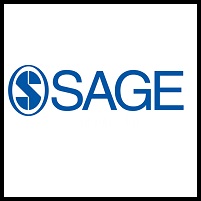| مشخصات مقاله | |
| انتشار | مقاله سال ۲۰۱۷ |
| تعداد صفحات مقاله انگلیسی | ۲۷ صفحه |
| هزینه | دانلود مقاله انگلیسی رایگان میباشد. |
| منتشر شده در | نشریه Sage |
| نوع مقاله | ISI |
| عنوان انگلیسی مقاله | The Economic Consequences of Expanding Accounting Recognition |
| ترجمه عنوان مقاله | پیامدهای اقتصادی گسترش شناخت حسابداری |
| فرمت مقاله انگلیسی | |
| رشته های مرتبط | اقتصاد و حسابداری |
| گرایش های مرتبط | اقتصاد مالی و حسابداری مالی |
| مجله | مجله حسابداری، حسابرسی و امور مالی – Journal of Accounting Auditing & Finance |
| دانشگاه | University of Illinois at Urbana–Champaign – USA |
| کلمات کلیدی | روش های اندازه گیری حسابداری، محدوده اندازه گیری، نویز اندازه گیری |
| کلمات کلیدی انگلیسی | accounting measurement regimes, measurement scope, measurement noise |
| کد محصول | E7943 |
| وضعیت ترجمه مقاله | ترجمه آماده این مقاله موجود نمیباشد. میتوانید از طریق دکمه پایین سفارش دهید. |
| دانلود رایگان مقاله | دانلود رایگان مقاله انگلیسی |
| سفارش ترجمه این مقاله | سفارش ترجمه این مقاله |
| بخشی از متن مقاله: |
| Introduction
Within the accounting measurement structure, a critical scope issue is whether accounting measurements exclude future economic activities that are relevant to firm value but inherently hard to measure. Over the past few decades, the scope of accounting recognition has been expanding to include more and more such hard-to-measure future activities. The Financial Accounting Standards Board’s (FASB’s) newly issued accounting standard for credit losses is a representative example of this scope expansion.1 Under the previous ‘‘incurred loss’’ model, only expected losses over a specific time horizon that pass a ‘‘probable’’ threshold are recognized. The ‘‘current expected credit loss’’ (CECL) model specified by the new accounting standard, however, removes the ‘‘probable’’ threshold and requires the recognition of the lifetime expected losses of the loan, which are harder to measure. The new CECL model has been referred to by the American Bankers Association as ‘‘the biggest change ever to bank accounting.’’۲ The expansion is generally justified to be a response to the increasing demand from investors for more value-relevant information about an entity, particularly when much of the firm value emanates from future hard-to-measure events. During the debate of the new accounting standard on credit losses, most investors and analysts expressed their preference for the new CECL model based on their significant concerns with the delayed loss recognition.3 However, in addition to the relevant implementation and auditing costs, many preparers voiced their concerns over the large measurement uncertainty in the CECL’s longterm forecast of the expected credit losses. In their comment letters to the original exposure draft, preparers claim that it may be very difficult to accurately forecast the amount of losses beyond a certain point of time. For example, Morgan Stanley claims that ‘‘an expected credit loss measurement approach based on a life-of-loan estimate would increase substantially the level of estimation uncertainty . . .’’ In its letter, Ford Motor Company goes even further by saying that ‘‘the degree of accuracy or inaccuracy of the forecasts will always be the subject of debate with respect to whether it was an estimate or an error.’’ This debate on the new CECL model, to some extent, captures the general theme of controversy on most scope expansion issues. By including more hard-to-measure activities, accounting measurements become more useful on one hand. On the other hand, recognizing more hard-to-measure activities inevitably injects more noise into the resulting accounting measures. This apparent conflict between usefulness and noise appears to be a pervasive policy trade-off in designing modern accounting measurements.4 Our article examines this trade-off. Specifically, we consider two alternative accounting measurements designed to highlight the scope expansion and embed them into a standard investment model. Critical to the scope expansion is the simultaneous increase in both the measurement noise and the alignment between the accounting measure and the long-term investment return. Using this model, we investigate the scope expansion along two economic dimensions: investment efficiency and risk premium in the firm’s stock price.5 We find that when equilibrium investment levels are taken into account, different accounting regimes can affect the risk premium indirectly through their impacts on the investment level, beyond directly through the different measurement noise levels they bring. Through this indirect mechanism, sometimes there is no trade-off at all: The scope expansion may simultaneously increase investment efficiency and decrease risk premium. |
